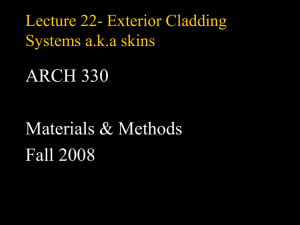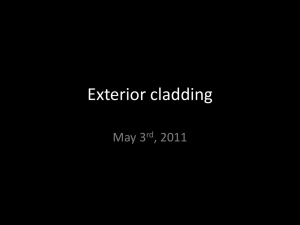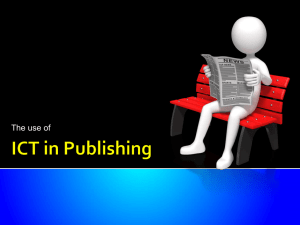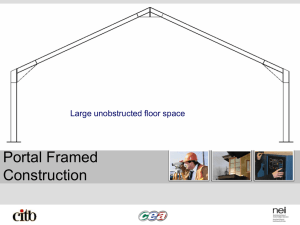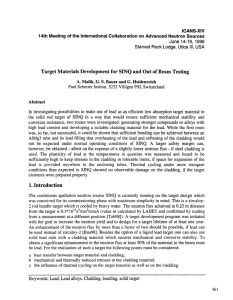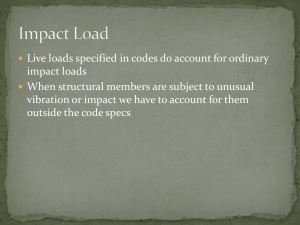Triplate transition joints
advertisement
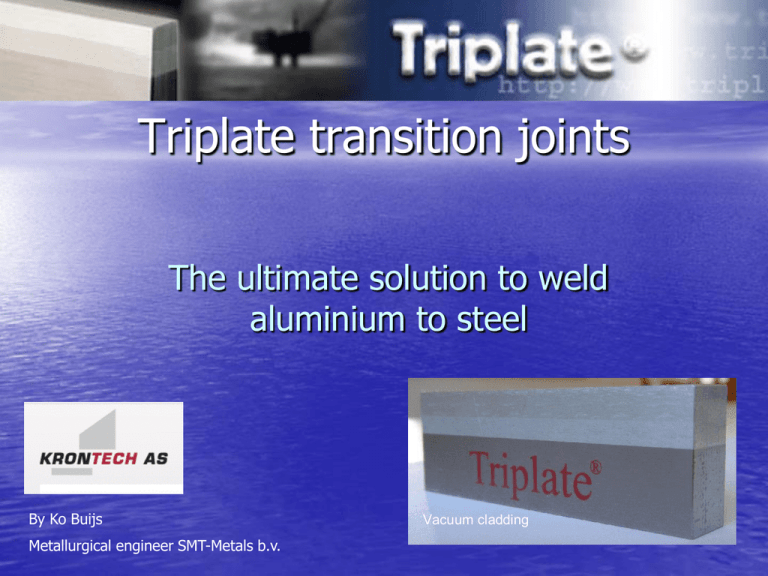
Triplate transition joints The ultimate solution to weld aluminium to steel By Ko Buijs Metallurgical engineer SMT-Metals b.v. Vacuum cladding Production route of Triplate • • • • • • • • • • Choice of right materials and study of features Grinding of the surfaces Preparing of special grade explosives Preparing vacuum chamber Explosion welding Flattening of the plates Cutting into bars and special shapes Inspection by QA-manager and independent surveyor Transport to customer After sales and all kind of recommendations What happens during welding? Explosives Vd Explosives B Vp Aluminium plate Cladding S Jet Vp ß B1 Steel plate Steel plate Collision point S = collision point high pressure will locally cause super plastic behavior of metals Metallic bond between Al and Fe Aluminium atoms Nucleus Metal bond Iron atoms Electron clouds Applications in the marine sector • Cruise vessels and mega • • • • • yachts Offshore platforms Fishing vessels Ferries Tenders and supply boats Special ships such as navy vessels Vacuum cladding Some examples Differences with open air cladding • Triplate is manufactured in a • • • • • • vacuum environment Therefore we need less explosives This will lead to a smooth interface The result is no oxide conglomerations in the interface Better bending properties Less risk of corrosion Easy to machine Three different interfaces Smooth wave interface Undulating wave interface Turbulent wave interface Oxide concentrations are visible Open air cladding versus vacuum Oxide conglomerations are visible Small holes will initiate corrosion in due course especially when bend Disadvantage during bending and cutting Limited fatigue strength Open air cladding Vacuum cladding Source: http://www.fme-cwm.nl/Download/Publicaties/vm_115.pdf Atmospheric cladded transition joints Concentrations of oxides are visible Open air cladding Atmosferic clad transition joints aluminium/steel Side bend test Side Bend Test 90° Open air cladding Vacuum clad generates no oxide holes Top: Atmospheric cladded Bottom: Vacuum cladded Triplate Hammer bend test MIL-J-24445A Left: Atmospheric cladded Right: Vacuum cladded Triplate Combination hammer bend and side bend test Oxide holes can initiate cracks after bending The result of crevices Oxide conglomerations are dangerous since they could initiate serious corrosion in the interface steel/aluminium. This is a result of an open air cladding. Result of vacuum cladding. No oxide conglomerations are visible. No crevice or galvanic corrosion. The strength of the interface Tensile test Even at bending radius 2x width Triplate shows no cracks. Summary of differences • • • • • • • Open air cladding Oxides with porosity Oxides initiate fractures Holes initiate corrosion Side bend radius 10x width of the strip Variable weather conditions Harder to machine (sawing and bending) • • • • • • • Vacuum cladding 100% dense Does not apply Does not apply Side bend radius 5x width or even less Does not apply since it is inside Easy sawing and forming thanks to high ductility The right set-up of Triplate Aluminium superstructure Triplate transition joint Steel plate Steel plate Optimum set up Good set up Steel plate Acceptable set up Transit zone shear strength in N/mm2 110 96 83 69 55 41 28 14 0 40 90 100 200 260 315 370 425 Temperature °C Relationship between temperature and shear strength aluminium/steel transition joints after 200 hours heat input. Temperature gradient during welding 240°C 670°C Al/Mg Aluminium Steel Temperature 1550°C Subjected to normal circumstances. It’s relevant to first weld the aluminium plate to the transition joint Unacceptable configurations Steel plate Worst possible set up Unacceptable set up The interface will overheat during welding. That will cause an hard brittle interlayer. What happens when the temperature is too high during processing of Triplate? Aluminium 99,5% 23Hv 6,5x Brittle aluminium iron crystals 760Hv Steel 127Hv V= 500x 1 Aluminium plate F F Ideal situation Tensile strenght min. 275 Mpa 100% Steel plate 2 Tensile strength min. 205 Mpa 75% F a F Torque = F x a 3 Tensile strength min. 165 Mpa 60% F Sensitive location for notch effects Width transition joint must be four times the thickness of the aluminium plate. F Tensile test asymmetric set-up Triplate is not the weakest link in the chain Special shapes by means of water cutting Full freedom of design and digitally controlled Triplate butt welds • Butt welds are labour intensive • Butt welds are expensive • Difficult to seal it in a right way • Avoid butt welds as much as possible • Therefore longer lengths available (5.8 m) Various approvals such as Lloyd’s, Veritas, RINA, Germanische Lloyd, Det Norske Veritas and American Bureau of Shipping Many thanks for your attention www.krontech.no
